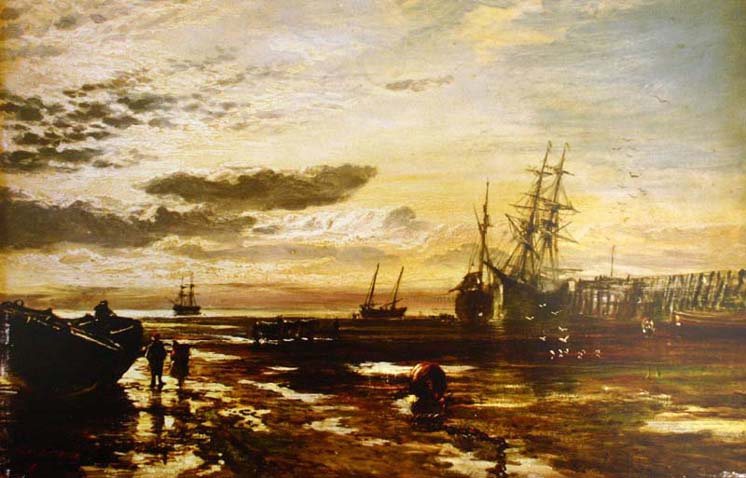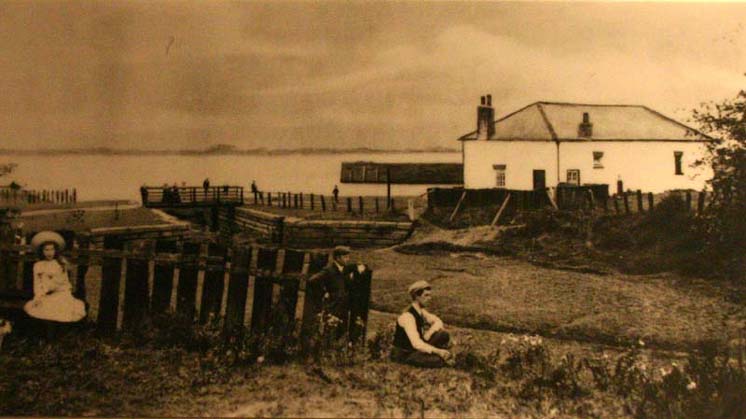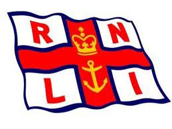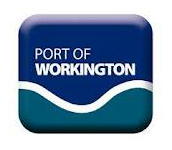- Home
- Scarrows
- Mariners
- Cumberland
- Miscellaneous
Port Carlisle
The village of Port Carlisle, originally known as Fishers Cross, was developed as a port in 1819 to handle goods for Carlisle using the canal link built in 1823. The canal was 11¼ mile long, and had 8 locks which were all built 18 feet wide.

From a wooden jetty, through the entrance sea lock and one other, the canal ran level for nearly six miles. Then followed six locks in one and a quarter miles, with a level stretch to Carlisle Basin.
Sailing boats made their way by the canal from Port Carlisle (about one mile from Bowness-on-Solway) to the heart of the City of Carlisle. Boats were towed to the City (taking one hour 40 minutes) enabling Carlisle to be reached within a day by sea from Liverpool. Barges collected the grain and produce destined for Carlisle's biscuit and feed mills. The canal built specially for this purpose ended in the canal basin behind the present Carrs (McVities) biscuit factory in Carlisle.
Within a few years the canal ran into financial difficulties, and was closed, finally being drained in 1853.
The canal left the village heading north west following a similar line to Hadrian's Roman wall. There are still a number of original canal bridges, but they all had their height altered to accommodate steam trains. Also on the route is a warehouse and a lock cottage.

The canal was later replaced by a railway, which brought many Scandinavian emigrants through Carlisle on their way to the USA. The building of the Bowness-on-Solway railway viaduct altered the deepwater channels, causing Port Carlisle to silt up, and the railway was abandoned, but its course can still be traced.

Illustrated above is one of four horse drawn 'Dandy cars' built by the North British Railway for use on the Port Carlisle to Carlisle railway. In 1854, just after the canal was filled in, a railway opened using the canal bed for its route from Carlisle to Port Carlisle. Freight services were withdrawn in 1899, but the horse drawn passenger service instituted in 1863 continued until 1914, when it was replaced by steam. In 1932 the branch line closed.
The Canal
The Carlisle Canal had a rather short life but was very successful for a while. Although the canal's course can easily be followed today, there is nothing of the actual waterway left though a few buildings and bridges have survived.
| 1800 | Local people in the Carlisle area wanted improvements made to the navigable state of the River Eden which connected Carlisle to the sea but was often very shallow and was always only navigable subject to the tides. Around the same time there were also grand ideas of creating a ship canal which would connect the east coast to the west coast via the Tyne at Newcastle and the Eden at Carlisle. From Carlisle the coast to coast route was proposed (at different times) to take one of three routes. It could either continue along a canalised River Eden to the Solway Firth, it could continue west on a new canal to a point on the Solway Firth or it could head south west across country to Maryport. Although proposals were often made, nothing was done at this stage. |
| 1807 | A committee was set up to look into the possibilities of a coast to coast route. Unlike most other canals, it was the local council rather than local businessmen who promoted the route. I guess that if local businessmen had been interested in a waterway, it would have already been built. William Chapman was employed to produce a report, he soon presented his report to the council but once again nothing more was done at this time. |
| 1819 | It was decided that a canal from Carlisle to the Solway Firth should be built. If this was a success, an extension across to the River Tyne could be built at a later date. The Act of Parliament was gained and work began with William Chapman as consultant engineer. Before construction began the proprietors of the Carlisle Canal went to look at the Lancaster Canal and the Forth & Clyde Canal to learn from their experiences. |
| 1823 | The 11¼ mile route was fully opened from a basin in Carlisle to the Solway Firth at Fisher's Cross which was renamed Port Carlisle. However, there had been disagreements during construction which had resulted in the sacking of William Chapman. The finished canal had 8 locks which were all built 18 feet wide to take sea-going vessels. Drawbridges similar to those on the Forth & Clyde were installed along the route. The canal was a fair success at first with timber, coal and bricks providing most of the trade. |
| 1825 | A railway - one of the world's first - was proposed which would link Newcastle and Carlisle. This ended any hope of a coast to coast canal but the Carlisle Canal Company supported the railway as it would help increase their own trade. |
| 1826 | A packet boat service began. This became so popular that the company built the Solway Hotel and a special passenger jetty at Port Carlisle. |
| 1835 | As the railway to Newcastle was being built, the canal increased its tolls, trade grew and both profits and dividends went up. An improved passenger service was created and a water wheel and pump system was installed to accommodate the increase in traffic. |
| 1839 | The Newcastle to Carlisle railway was fully opened and the Carlisle Canal entered its most prosperous era. |
| 1845 |  The canal's heyday was soon over. Other railways arrived in the north west and they soon began to take business away from the canal. The biggest injury to the canal's trade came with the opening of the Lancaster & Carlisle Railway which stole both the freight and passenger trade away from the waterway. Tolls were now reduced and profits fell. Things declined so rapidly that the company themselves looked at the possibility of turning the canal into a railway. At first, nothing was done. The canal's heyday was soon over. Other railways arrived in the north west and they soon began to take business away from the canal. The biggest injury to the canal's trade came with the opening of the Lancaster & Carlisle Railway which stole both the freight and passenger trade away from the waterway. Tolls were now reduced and profits fell. Things declined so rapidly that the company themselves looked at the possibility of turning the canal into a railway. At first, nothing was done. |
| 1852 | With freight and passenger trade at an all time low the canal company decided enough was enough and made plans to convert the route into a railway. |
| 1853 | The Carlisle Canal was closed after exactly 30 years in which it had seen a very fast rise to success and an even faster decline. |
| 1854 | A railway opened using the canal bed for its route from Carlisle to Port Carlisle. |
| 1932 | The railway branch line to Port Carlisle was closed. |








